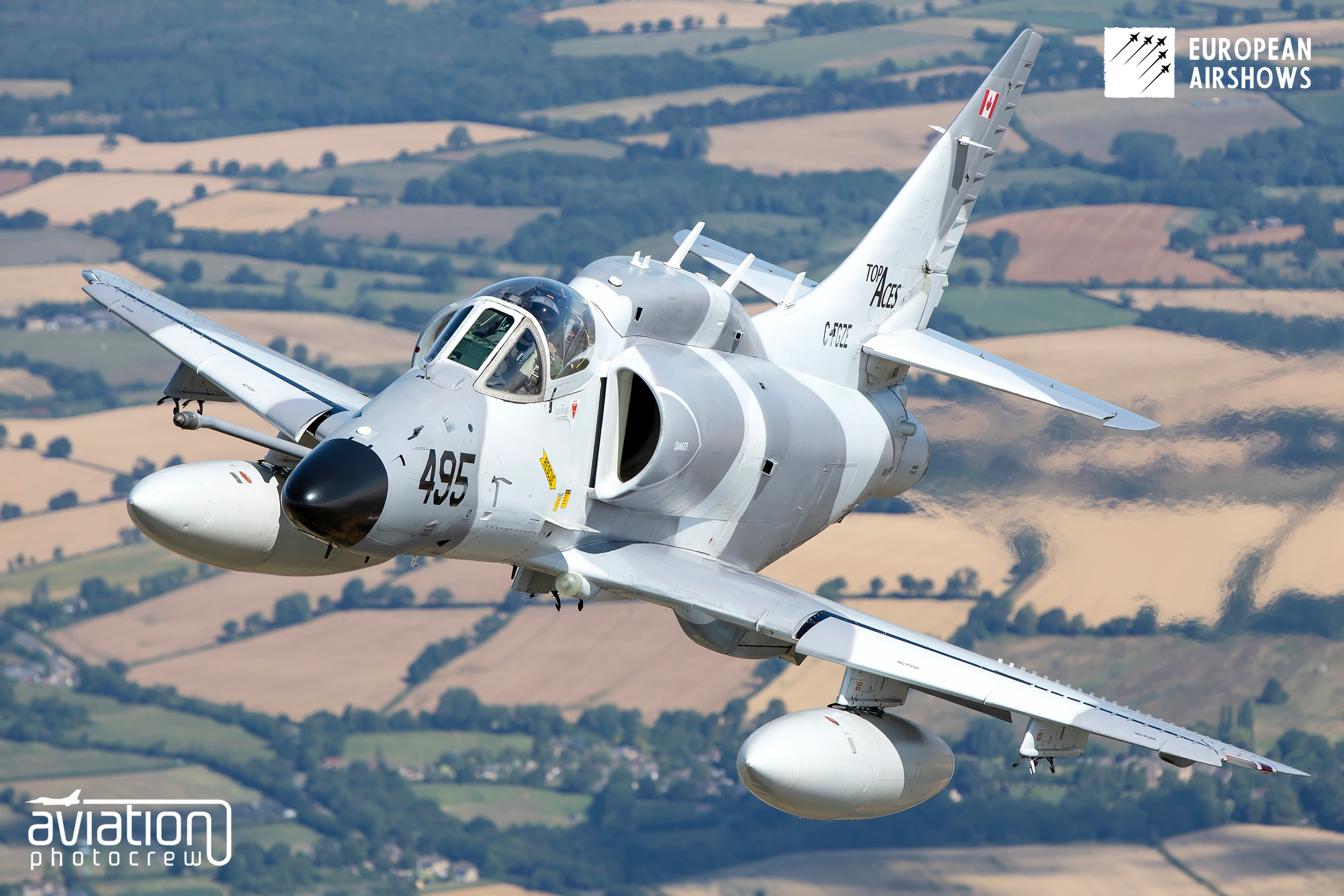
June 22 / A-4 Skyhawk first flight
First Flight 22 June 1954
Douglas A-4 Skyhawk
The Douglas A-4 Skyhawk, a legendary aircraft highly regarded for its compact design and versatility, carved a prominent place in aviation history. This agile attack aircraft boasted a remarkable service record spanning several decades, earning a reputation for its exceptional performance in various roles.
Origins and Development:
The A-4 Skyhawk was designed by the Douglas Aircraft Company in the early 1950s to meet the United States Navy’s requirement for a lightweight, carrier-based attack aircraft. Ed Heinemann, the chief designer at Douglas, led the development of the aircraft, focusing on simplicity, efficiency, and affordability.
First Flight and Initial Service:
The prototype A-4 made its maiden flight on June 22, 1954. The aircraft’s compact size, robust design, and impressive performance characteristics quickly caught the attention of the U.S. Navy. In 1956, the A-4 Skyhawk entered service with the Navy and the Marine Corps, becoming one of the most successful attack aircraft of its time.
Design Features:
The A-4 Skyhawk was known for its compact size, lightweight construction, and high thrust-to-weight ratio. It featured a single Pratt & Whitney J52 turbojet engine, a low-mounted delta wing, and a unique cockpit layout that provided excellent visibility for the pilot. The aircraft’s simple and rugged design made it easy to maintain and operate, earning it the nickname “Scooter.”
Combat Operations:
The A-4 Skyhawk saw extensive combat service during the Vietnam War, where it earned a reputation for its accuracy, agility, and survivability. Skyhawks operated from aircraft carriers and land bases, conducting close air support, interdiction, and reconnaissance missions. The aircraft’s ability to deliver precision strikes with a variety of weapons made it a valuable asset in the conflict.
Variants and Upgrades:
Over the years, the A-4 Skyhawk underwent several upgrades and modifications to enhance its capabilities. Variants included the A-4B, A-4C, A-4E, A-4F, and A-4M, each incorporating improvements in avionics, weapons systems, and performance. The A-4 also served as a platform for testing and development, leading to specialized versions for electronic warfare and reconnaissance missions.
Global Service:
In addition to its service with the U.S. military, the A-4 Skyhawk was exported to numerous countries around the world. Allied nations such as Australia, Argentina, Israel, and Singapore operated the aircraft, further demonstrating its versatility and adaptability to different operational requirements.
Legacy and Retirement:
The A-4 Skyhawk remained in service with various air forces well into the late 20th century, showcasing its enduring legacy as a reliable and effective attack aircraft. The aircraft was eventually retired from active duty and replaced by more modern and advanced platforms. However, many A-4s found new life in civilian roles, such as aggressor training and aerial firefighting.
Conclusion:
The Douglas A-4 Skyhawk stands as a testament to the ingenuity and innovation of its designers and the bravery and skill of its pilots. From its humble beginnings as a lightweight attack aircraft to its widespread service around the world, the A-4 left an indelible mark on aviation history. Its legacy lives on in the hearts of those who flew and maintained this iconic aircraft, symbolizing the spirit of excellence and dedication that defined an era of military aviation.
Skyhawk Facts
“Heinemann’s Hot Rod”: The A-4 Skyhawk was famously nicknamed “Heinemann’s Hot Rod” after its chief designer, Ed Heinemann, who prioritized simplicity and efficiency in its design, resulting in a compact and agile aircraft that exceeded expectations.
Carrier Landing Record: The A-4 Skyhawk set a record for carrier landings with an astonishing 1,000 landings in just 1 day during carrier trials, showcasing its exceptional handling characteristics and reliability.
“Scooter” Moniker: The A-4 earned the affectionate nickname “Scooter” due to its small size, nimble handling, and remarkable performance, making it a favorite among pilots for its responsiveness and ease of flying.
Blue Angels Performer: The A-4 Skyhawk was flown by the U.S. Navy Blue Angels flight demonstration team from 1974 to 1986, thrilling audiences with its precision maneuvers and showcasing the aircraft’s agility and aerobatic capabilities.
Vietnam War Ace: U.S. Navy pilot Lt. Randy “Duke” Cunningham became the first ace of the Vietnam War flying an A-4 Skyhawk, achieving five confirmed kills in aerial combat, highlighting the aircraft’s combat effectiveness and pilot skill.
Record-Breaking Speed: The A-4 Skyhawk set a speed record in 1961 by flying from Los Angeles to New York in just 2 hours and 47 minutes, demonstrating its impressive speed and range capabilities for a subsonic aircraft.
A-4 Aggressor Squadrons: The A-4 Skyhawk was extensively used in the role of aggressor training, where specially painted aircraft simulated enemy forces in combat training exercises, helping pilots hone their skills against realistic threats.
Israel’s A-4s: The Israeli Air Force utilized A-4 Skyhawks in various conflicts, including the Six-Day War and Yom Kippur War, where the aircraft’s agility and precision strikes played a crucial role in air combat missions and ground support operations.
A-4AR Fightinghawk: Argentina modified its A-4 Skyhawks into the A-4AR Fightinghawk variant, featuring upgraded avionics and weapons systems, enhancing the aircraft’s combat capabilities and extending its service life.
A-4 in the Falklands War: During the Falklands War, Argentine A-4 Skyhawks conducted daring attacks on British ships, including the infamous strike on HMS Sheffield, showcasing the aircraft’s effectiveness in combat operations and its role in a significant military conflict.













